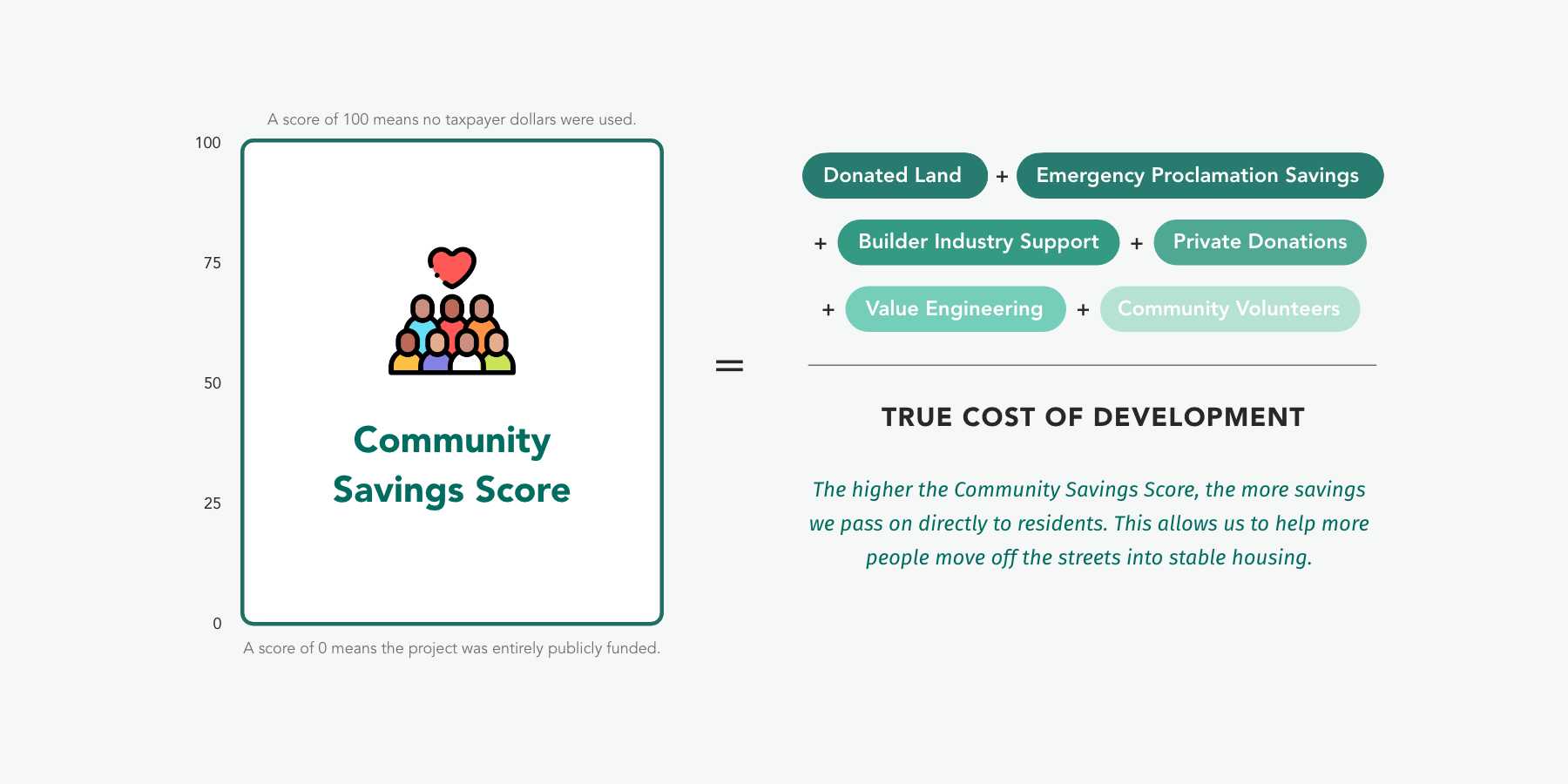There are many ways to measure progress in addressing homelessness. We can look at how many people are housed, how many transition into permanent homes, or how well support services are delivered. These are all important. But as a nonprofit community developer, HomeAid Hawai‘i’s primary focus is to build housing.
Our impact is rooted in construction. We track how many deeply affordable homes we build and how efficiently we can deliver them. One way we communicate this is through the Community Savings Score, which reflects how much of a project’s cost is offset by community contributions like donated land, labor, materials, and private funding. By making these savings visible, the score helps illustrate how collaboration directly reduces costs and increases access to housing. As more organizations participate in the process, they also gain a deeper understanding of the problem we are working to solve together.
A score of 100 means no taxpayer dollars were used. A score of 0 means the project was entirely publicly funded.

To achieve the highest score possible, we use every resource available.
Emergency Proclamation Savings
Building Industry Support
Donated Land
Private Fundraising and Grants
Value Engineering
Community Volunteers